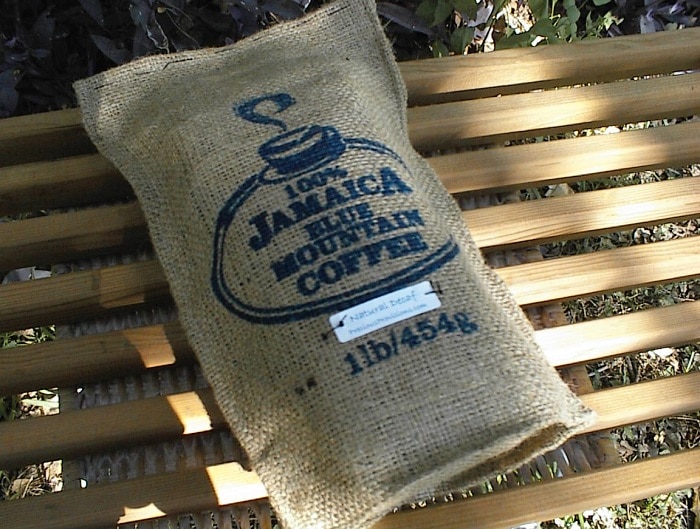Let’s talk about the Jamaican Blue Mountain coffee and its delicious taste. Coffee connoisseurs worldwide extol the virtues of their region’s particular claim to fame. Hawaiians have Kona and Ka’u coffees, Ethiopians have Yirgacheffe, Guatemalans produce fine coffees from Antigua. Nonetheless, as delicious as they are, these coffees cannot compare to Jamaican Blue Mountain Coffee. Highly sought after, this other-worldly coffee can only be produced in the exceptional growing environment of Jamaica. Rigorous quality control processes guarantee that only the best of the island’s coffee can be labeled Blue Mountain. Though hard to find outside of Jamaica, it is well worth the effort.

The Royal Roots of Jamaican Blue Mountain Coffee
Nearly 300 years ago, in 1723, French monarch King Louis XV sent a mere three Arabica coffee plants to the French island colony of Martinique. The plants thrived in the island’s rich soil and five years later the governor of Martinique gifted the governor of Jamaica a single coffee plant. The coffee grew exceptionally better in Jamaica, and within the next century, Jamaica became the world’s largest coffee producer. Coffee growing and harvesting on the steep slopes of Jamaica’s mountainsides is extremely labor intensive. When slavery was abolished in 1838, Jamaica could no longer sustain its huge plantations and quickly became a minor player in the global coffee game. The word, however, was out. The coffee from Jamaica had a superior flavor to other coffees. Despite the drastic reduction in output, it was still in high demand.
The secret to Jamaica’s success is its unique growing environment. The volcanic soil of Jamaica is rich in nitrogen and phosphorus. The island has high rainfall and the Blue Mountains have excellent drainage. Above all other factors, fog shrouds the Blue Mountains daily. The fog slows the development of the coffee beans, allowing them to be much denser than beans grown in fog-free environments. In fact, it takes ten months for Jamaican Blue Mountain Coffee to come to maturity, almost twice as long as the typical coffee plant. The fog belt is somewhat narrow and coffee grown outside of it doesn’t have the same level of quality.
Ensuring High-Quality Coffee
Quality control became an issue at the end of the 19th century and Jamaica struggled with it until the establishment of the Jamaican Coffee Industry Board (JCIB) in 1950. The JCIB set strict standards for the different grades of coffee and established centralized processing facilities. In order to be labeled Jamaican Blue Mountain Coffee, the beans have to be grown in one specific region of the island in-between 3000 and 5,500 feet in elevation, the fog zone. Trained tasters evaluate the coffee, judging its color, fragrance, acidity and body, amongst other factors.

How to Prepare Jamaican Blue Mountain Coffee at Home
As you may guess, this incredible coffee is a bit pricey. Knowing how to brew the perfect cup ensures that your money will have been well spent. First of all, it is important to begin with clean equipment. Reusable filters, coffee makers, coffee presses and the like can all harbor caffeol, the oil from coffee beans which can cause coffee to taste rancid or bitter. Secondly, use fresh whole beans and grind them just before use. A conical burr grinder is superior to a blade grinder as it outputs a very consistently sized grind.
How coarse or fine you grind the coffee beans depends upon the type of equipment you are using.
| How to Grind Coffee | |
| Grind | Method |
| Coarse (Very Chunky) | French Press |
| Medium-Coarse (Less Chunky) | Chemex |
| Medium (Like Kosher Salt) | Drip or Machine Drip |
| Medium-Fine (Between Kosher Salt and Table Salt) | Siphon |
| Fine (Like Table Salt) | Espresso or Aeropress |
| Very Fine (Like Powdered Sugar) | Turkish Coffee |
Water and water temperature are also key to a flawless cup of coffee. In rare cases, tap water is acceptable to use. In general, however, it contains chlorine and other contaminants that can compromise the flavor of the coffee. Distilled bottled water is the best choice but filtered water can also be used. What’s more, the water temperature should be between 195 to 205 degrees Fahrenheit. If the water is too hot, the coffee will be over-extracted, causing a bitter flavor. If the water is too cold, the coffee will be under-extracted, causing a sour, weak flavor.

Where Can You Try the Jamaican Blue Mountain Coffee?
Finding Blue Mountain Coffee locally is difficult as more than 80% of this delicious variety is exported directly to Japan. An occasional boutique coffee shop, like Philz in Santa Monica or Blue Bottle Café in San Francisco, will serve it. Many Peets locations offer it by the pound.
If you do make your way to Jamaica, most resorts and high-end restaurants offer Jamaican Blue Mountain Coffee. You can also buy it by the pound at the supermarkets, but be wary of blends. Many shops and street vendors also sell the whole beans but, again, look for the Jamaican Coffee Industry Board stamp.
Nowhere else on the planet have conditions so favorable to producing the perfect coffee bean come together. Both by luck and persistent attention to quality and detail, Jamaican Blue Mountain Coffee reigns as one of the world’s best coffees. Imagine sitting on a terrace in Jamaica overlooking the Caribbean, little birds welcoming the sun, the breeze brushing the palm leaves together, enjoying a delicious Jamaican breakfast, and raising a steaming mug of Blue Mountain Coffee to your lips, paradise.
If a trip to Jamaica isn’t in the cards for you, seek out this incomparable coffee. Have you sampled it in your area? How was the experience? Let us know.
